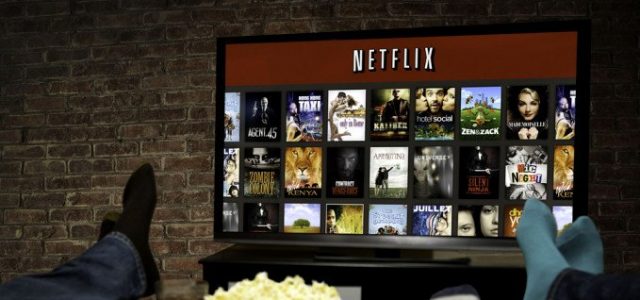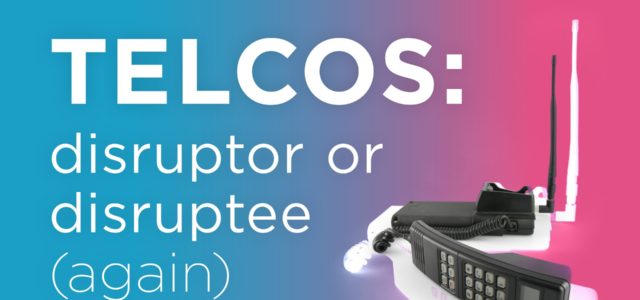I’ve always been heavily involved with retail. I’ve worked with major international retail brands and independents worldwide and enjoy the immediacy that comes with the direct connection they have with their customers. There’s a special satisfaction in being able to affect immediate improvements to the performance of a business and there’s no sector where change impacts more rapidly than retail.
However, the sector is struggling more than some in coming to terms with digital transformation and, for once, legacy retailers are proving slow to make the changes essential to their future in the digital economy.
Business people love buzz-words, even though most of the time their full meanings aren’t appreciated. The one circulating the retail sector at the moment is “omni-channel” which sounds and is impressive, but is commonly confused with “multichannel”, a far simpler concept that is, in the digital context, ancient history.
Multichannel is pretty much what it says. It’s a business that operates through a number of channels. The channels don’t have to connect in any way and you might have entirely separate back-office infrastructure supporting them, although I can’t say, in an era where efficiency is the major differentiator between success and failure, I’d recommend it!
Omni-channel, on the other hand is an environment where multiple channels operate as one. A true omni-channel experience is one where the on-line and physical channels are seamlessly knitted together, so that customers can transition from their mobile device or computer to in-store engagement with total continuity and absolutely no drop-out. To achieve this state channels like mail order, physical stores and on-line environments have to adopt aspects of each other.
Customer who commence their engagement on-line may decide they want to see and touch the product before committing to a purchase. It’s possible to do this seamlessly using basic technology. The customer can end their on-line session, arrive at a store where beacon technology picks up their arrival and directs them using their hand-held device to the product they are browsing on-line. It is possible at any stage in the sales process to introduce information and incentives to ease things along and the customer can use a single click to order there and then if it’s a non-stock item, or pay and walk out with the goods, without going through a traditional check-out and be security checked on their way out.
A relationship that starts at the point of sale does pretty much the same in reverse. Product information would be available on tablet-type devices, in which case the customer may need to log in (but even his can be automated) and new customer files can be created there and then. Alternatively the relationship can commence through an app on the customers handset. The key to all of this is data collection and management.
A new customer file will have been created at the very first point of contact, using basic information including the customer’s mobile phone number. This might prompt an invitation to download an app. From the point where the app is activated the process becomes even more smooth and refined. If you can acquire the necessary permissions, cookies will enable you to spot sales opportunities arising from the customers’ Internet browsing and intercept a potential visit to one of your competitors with a unique offer that will divert the sale to you. Sales and browsing history facilitate offers and experience unique to every customer with absolutely no human intervention once the customers journeys have been mapped out and set up and it gets even more exciting when you apply AI even at its current state of evolution.
By now this level of automation should be table-stakes for any retailer, although, it’s clear that it isn’t for the vast majority. An approach such as this also provides a rapidly-expanding range of customer management opportunities that any retailer should by now be exploring and experimenting with. These involve areas such as social customer care, loyalty and sales development. A substantial customer database, well managed, will open up exciting new business opportunities for any retailer.
Brand is everywhere in this retail scenario, but it is critical in two areas. The first, as with any business is in providing the focus required to get your employees aligned to a single objective. Once that is achieved the initiatives that will drive your success will begin to flow. All you have to do is create an environment for incubation.
The second key area is in the creation of the environment where all stakeholders feel comfortable, because the more comfortable they are the deeper the relationship you will have with them and therefore the greater your options. A customer with a sense of belonging to a brand community will welcome your advances. In fact a strong brand will eliminate much of the friction in any sales process.
The purpose of transformation is the pursuit of efficiency. Business efficiency has always been the primary differentiator between success and failure. That hasn’t changed, but the pace and transparency of the digital economy means there is no longer an opportunity to fudge it. In today’s marketplace value is paramount, prices are being forced down and if you don’t maximise efficiency you will go broke. It’s simple!
Transformation is harnessing technology to reduce human intervention in every function of your business. For a retail business that embraces both omni-channel marketing and customer management and supply-chain management. If you are successful in streamlining your organisation you may survive. If you are the first in your sector to do so you stand a good chance of achieving volume growth that will safeguard your workforce and even increase your head-count, albeit re-assigned to roles that computers can’t do. However, it’s not just the outcome that should be more efficient, but the approach you take to your transformation and the key to efficiencies in both these areas is a clearly defined brand.
Time is running out for organisations that haven’t brought their transformation over the line already. They are in business only because no true digital challenger has entered their sector yet. However, they will and when they do the effect will be cataclysmic and immediate. You simply can’t afford to wait until you see the whites of their eyes.
No retailer is going to avoid transformation and survive and that means building an omni-channel business but, if you want to cut out unnecessary time wasting, pain and cost you have to start by defining and developing your brand. A great brand will provide the focus your organisation needs to affect your transformation, efficiently and quickly. It will drive the innovation you need to stay ahead of your challengers, giving you the single-mindedness to succeed in the very limited time you have remaining.
Article by channel:
Everything you need to know about Digital Transformation
The best articles, news and events direct to your inbox
Read more articles tagged: Brand, Featured, Omnichannel, Retail







